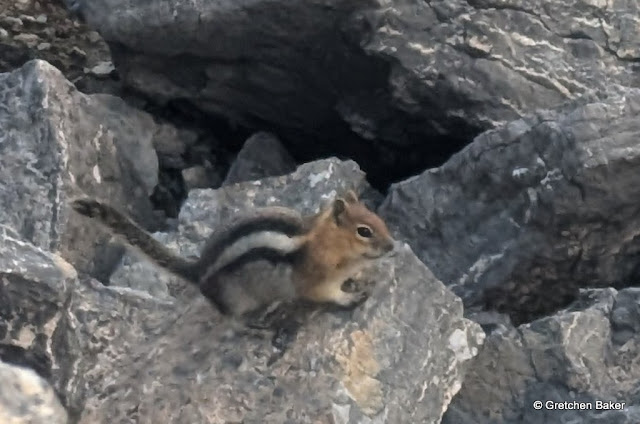I really enjoyed the arborglyphs like this one, which said "Peligro" (Danger) and had a skull and crossbones. What danger lurked ahead? Many of the abundant arborglyphs were carved by longely sheepherders from Peru in the 1980s. Nowadays the practice is frowned upon because it damages the aspen trees.
It didn't take too long to get up to the saddle area (with Willard Creek), and to my surprise, some of the aspens are changing color already.
There's a large spring in the area.
I was so excited to enjoy the view during golden hour, and fortunately Desert Girl was willing to pose.
We heard one bull elk bugling, which is such a weird sound. But it was pretty quiet during the night, much to my surprise. I woke up early.
And enjoyed sunrise.
Clouds always make the sky prettier!
The views in this area are really pretty. Perhaps not stunning like in some nearby spots, but just a gentle beauty and peace that is very comforting.
A cow skull from days gone by is on a boulder. Cattle grazing was retired from Great Basin National Park in 1999 and sheep grazing in 2009.
This arborglyph is a bit of a map, with an arrow towards Osceola and the Robison Spring. The Robisons lived in the area for a long time and ran a lot of sheep on the Snake Range.
Hiking down the next day we saw this arborglyph from 1911. I can't really figure out what else it says.
My husband and Desert Boy stop for an older arborglyph.
This one that says H2O and an arrow shows where Strawberry Creek reappears and then continues flowing.
And here's an arborglyph from 1903!
The elderberries were ripe, so I snacked on them.
And then we finished the hike back through the burned area.
I don't have many photos of backpacking because the kids were so fast. I was the caboose. It was fun to go see a different area and have a short amount of miles to cover!.jpg)








































































